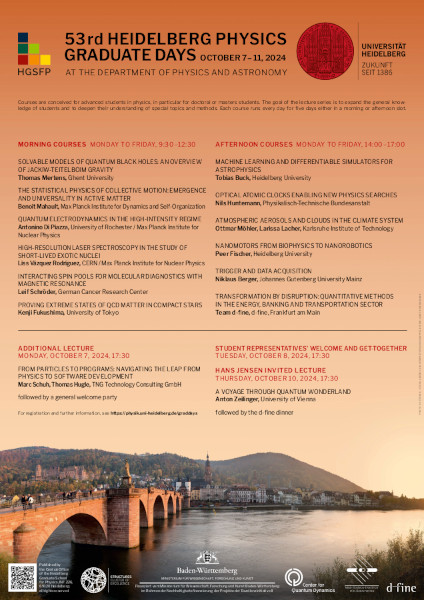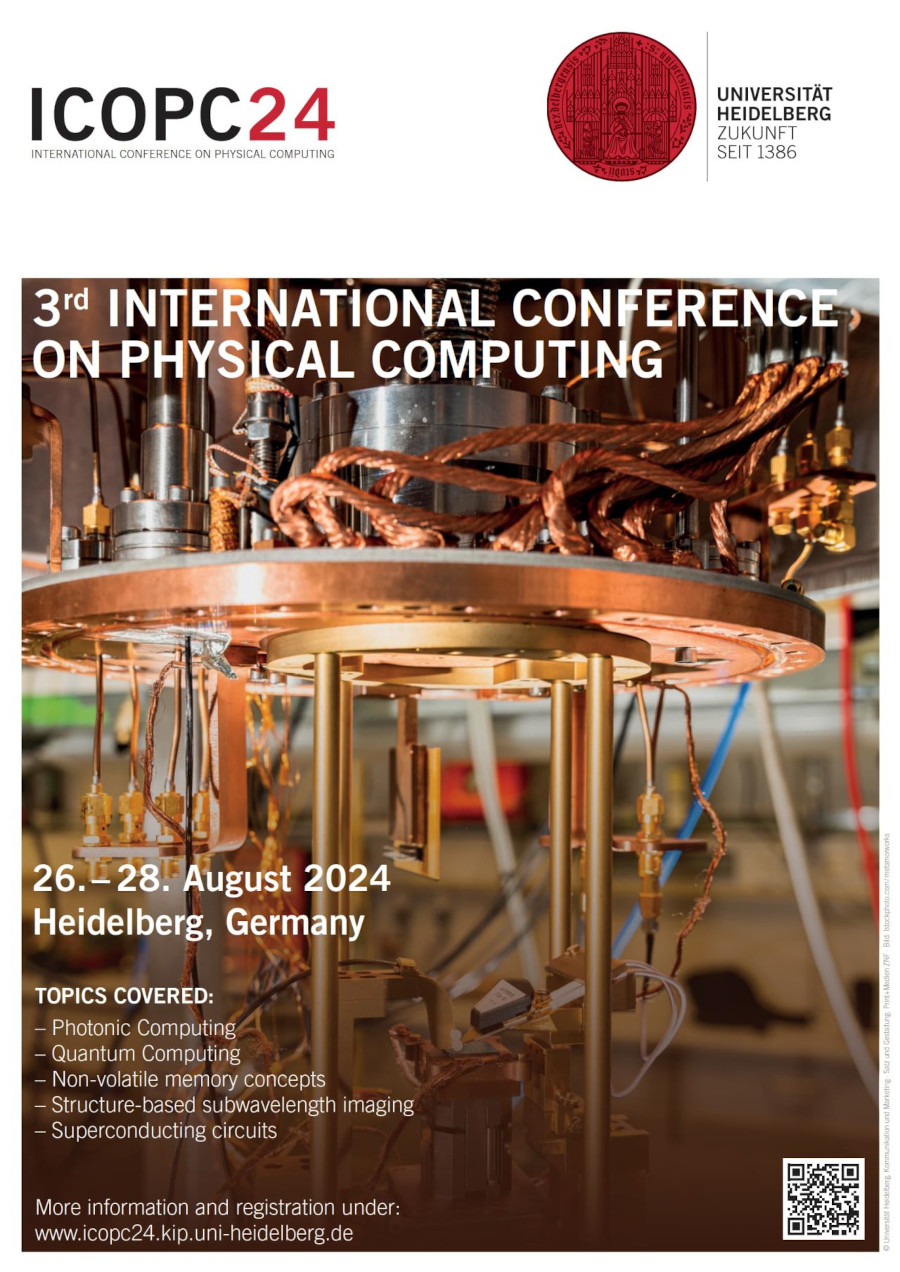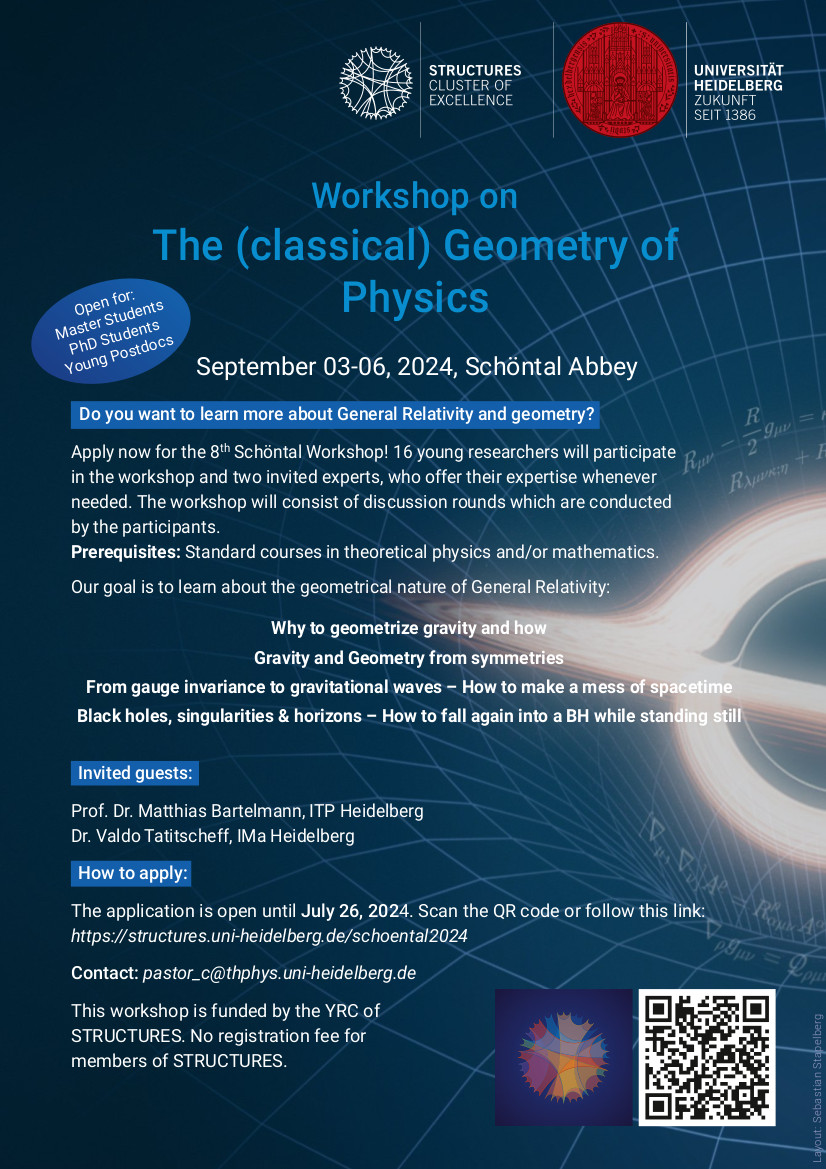Newsroom
Stay informed with our latest news and announcements on this page. For more in-depth content, we also encourage visitors to explore our bimonthly STRUCTURES Newsletter magazine, which features a variety of articles, interviews with members, and background information on our latest research and activities.
We are happy to announce the upcoming Heidelberg Physics Graduate Days, organized by the Heidelberg Graduate School for Physics (HGSFP) in collaboration with the STRUCTURES Cluster of Excellence. The courses take place from October 7 to 11, 2024, in the form of parallel block lectures in the mornings and afternoons.
The Heidelberg Physics Graduate Days, which take place biannually, serve as a dynamic platform for advanced students and researchers to broaden their perspective in physics by attending introductory courses on topics that are unfamiliar to them, or deepen their knowledge by attending specific courses that may be offered at a deeper level.
In addition to the block courses, the Department for Physics and Astronomy cordially invites interested participants and guests to the Hans Jensen Invited Lecture, which will be given by Prof. Anton Zeilinger, who will talk about “A Voyage through Quantum Wonderland” on Thursday, October 10, 2024 at 17:30.
Weblinks:
We are delighted to announce the 3rd International Conference on Physical Computing, taking place from August 26th to 28th in Heidelberg. The conference brings together stakeholders from diverse fields to discuss the prospects of using physical systems for information processing tasks in advanced computing, simulation and machine learning. The conference is a unique opportunity to discuss the latest developments in the physical computing field. Its theme is driven by the idea that physical concepts, functional materials and devices could be used to run computations directly, in contrast to using logic gates. There are several emerging themes and implementations of this concept, which we aim to cover in depth. The conference features talks by invited experts, a poster session for all participants as well as the opportunity for registering oral presentations or a symposium.
More information can be found on the conference web page at:
http://icopc24.kip.uni-heidelberg.de/
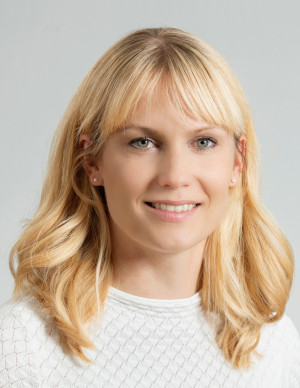
We are delighted to announce that our member Dominika Wylezalek, research group leader at the Centre for Astronomy (ZAH) of Heidelberg University, has been accepted as a new member of Die Junge Akademie at its annual ceremony on June 22. Throughout her five-year membership, Dr. Wylezalek will have the opportunity to initiate or join interdisciplinary research projects and working groups on topics such as climate change, science communication, and engaged science.
Founded in 2000 as the first academy for exceptional young academics, Die Junge Akademie brings together members from all scientific disciplines and the arts. The Academy explores the potential and boundaries of interdisciplinary work, fostering dialogue between science, art, and society, while driving discussions on science policy. Its 50 members collaborate on numerous joint initiatives, benefiting from a growing network of distinguished scientists and artists. In addition to research, members engage in projects that bridge science, art, and society, contributing their ideas to shape the future of the scientific community.
Further information and links:
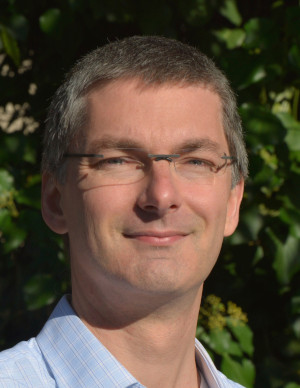
We are delighted to announce that our member Ralf Klessen, research group leader at the Centre for Astronomy (ZAH) of Heidelberg University, is selected as a fellow for the 2024–2025 academic year at Harvard Radcliffe Institute. As the Elizabeth S. and Richard M. Cashin Fellow, Ralf Klessen will collaborate with Harvard researchers to explore the Local Bubble – the Sun's environment as part of the larger Galactic ecosystem – and to learn more about our origins and place within the Milky Way. He will use advanced simulations and observations to better understand the complex processes of stellar birth. Klessen looks forward to the fellowship's interdisciplinary opportunities, enhancing the diverse nature of his astrophysical research and encompassing the arts and humanities as well.
The Harvard Radcliffe Institute is one of the world’s foremost centers for interdisciplinary research, bringing together scholars, artists, and professionals from diverse fields to explore complex questions and expand human knowledge. Each year, it selects a group of accomplished individuals as fellows to join its creative community, where they pursue ambitious projects and collaborate across disciplines, including the humanities, sciences, social sciences, and arts. In 2024, its 25th anniversary year, the Institute awarded 53 fellowships, providing recipients access to Harvard’s unparalleled resources, offering them a unique opportunity to pursue ambitious projects in a collaborative and intellectually stimulating environment.
Further information and links:
We are pleased to announce the conference Structures on Singular Spaces through the Lens of Characteristic Classes, to be held September 16 - 20, 2024. Organized by Prof. Markus Banagl (Institute for Mathematics, Heidelberg) and Prof. Laurentiu Maxim (University of Wisconsin at Madison), the conference aims at representing a wide variety of global viewpoints in recent developments concerning topological, analytic and algebraic aspects of characteristic classes for singular spaces, as well as of their lifts to orientation classes in various general homology theories such as K- and L-groups. The talks will take place in Mathematikon INF 205, Konferenzraum 5.104. For more information, please consult the conference webpage:
https://www.mathi.uni-heidelberg.de/~banagl/confcharclasses.htm
The programme includes two introductory mini-courses intended for young researchers.
The meeting is supported by the Cluster of Excellence STRUCTURES.
We are happy to announce this year's iteration of the Schöntal Discussion Workshop on The (classical) Geometry of Physics, which will take place from September 03-06, 2024. The Schöntal workshop has been called into life a few years ago and is designed to stimulate discussions between members of the YRC about a specific topic. It is targeted towards young researchers from physics and mathematics. Registration is open until July 26, 2024.
Further information:
We are delighted to announce the talk by Robert Ott (Universität Innsbruck / IQOQI) on “Probing Long-Range Topological Entanglement in Quantum Simulators” on Monday, July 15, 2024, at 1 pm in the seminar room at Philosophenweg 16:
Abstract:
Quantum simulators offer new ways of addressing the long-range entanglement structure of topologically ordered phases of matter. However, measuring entanglement on large subsystems is costly, such that the detection of topological entanglement across long distances becomes unfeasible. Here, we propose a protocol to overcome this challenge by adiabatically deforming the state into geometries where universal long-range entanglement can be efficiently extracted from smaller subregions. Our protocol is general and readily applicable to various quantum simulation architectures. We illustrate our scheme for various string-net models representing both abelian and non-abelian topologically ordered phases, and illustrate an application with neutral atom tweezer arrays.
